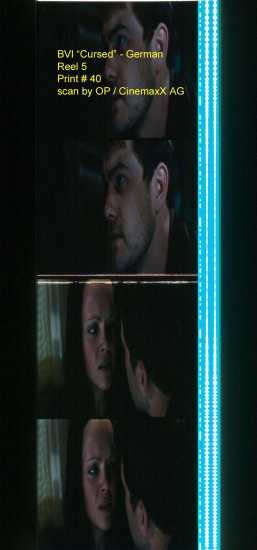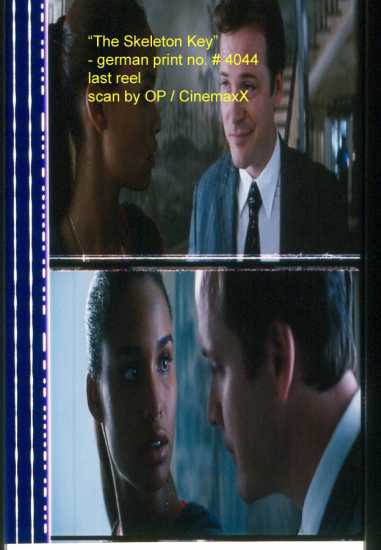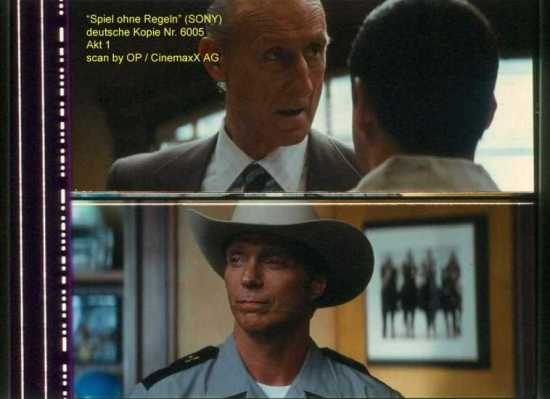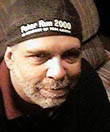|
|
 
|
|
Author
|
Topic: Visible negative cue markers with 2.39:1
|
Oliver Pasch
Film Handler

Posts: 53
From: Europe
Registered: Jun 2002
|
 posted 09-23-2005 08:19 AM
posted 09-23-2005 08:19 AM



Hi everybody,
i'd like to discuss the growing problem of visible negative cues within 2,39:1-filmframes, you know bright "flashs" beeing on screen with every cut that can not be turned into the masking. Here are some recent examples, scans from German release prints:



Scans are from "Cursed" (BVI), "The Skeleton Key" (UIP) and "The longest yard" (Paramount, in Germany distributed through SONY - i've de-sequeezed this scan to see what it looks like on screen, it's not 70mm... ![[Razz]](tongue.gif) ). ).
Other examples would include "xXx", "The interpreter", "Peter Pan" and "Bad Santa", so we're not talking about a specific distributor or studio here.
So what is this all about? Why do some pictures have these markers within the negative frame of - correct me if i'm wrong 825 x 690 inches - and some don't? Not talking about films where the negative has been cut "digitally" such as "Stealth".
Is it "just" sloppy negative cutting? Who makes the mistake? May i assume, that these markers should be visible on every release print around the world of a particular film, as it comes from the very same negative?
Starting to complain about this at German distributors mostly provides two results: 1.) It's - as always - supposed to be only me and my company complainig (but i know that's not true, having talk to my dear colleagues at other exhibitors AND being quite sure that picture formats in my theatres are according to the standards); 2.) When complaints are forwarded to the European offices, it's - as always - supposed to be only Germany complaining... ![[Frown]](frown.gif)
Best regards
Oliver
| IP: Logged
|
|
|
|
|
|
|
|
|
|
|
|
|
|
|
|
|
|
|
|
|
|
|
|
All times are Central (GMT -6:00)
|
|
Powered by Infopop Corporation
UBB.classicTM
6.3.1.2
The Film-Tech Forums are designed for various members related to the cinema industry to express their opinions, viewpoints and testimonials on various products, services and events based upon speculation, personal knowledge and factual information through use, therefore all views represented here allow no liability upon the publishers of this web site and the owners of said views assume no liability for any ill will resulting from these postings. The posts made here are for educational as well as entertainment purposes and as such anyone viewing this portion of the website must accept these views as statements of the author of that opinion
and agrees to release the authors from any and all liability.
|

 Home
Home
 Products
Products
 Store
Store
 Forum
Forum
 Warehouse
Warehouse
 Contact Us
Contact Us




 Printer-friendly view of this topic
Printer-friendly view of this topic







![[Razz]](tongue.gif) ).
). ![[Frown]](frown.gif)















